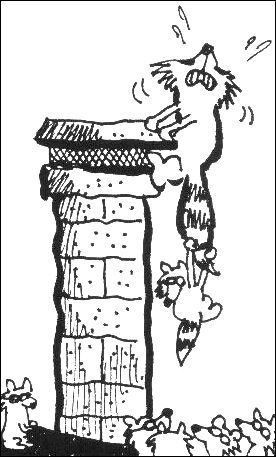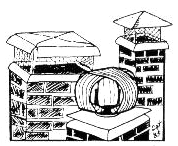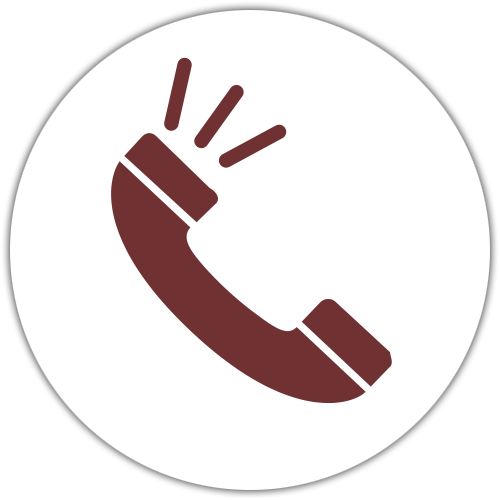Chimney Caps
The Importance of a Clean and Safe Chimney Cap
An open chimney is an invitation to trouble, and sometimes to disaster. Any experienced chimney sweep can tell you; Why Your Chimney Needs A Cap. Not only will it keep out critters, birds, small boys and other would-be thieves, but it will protect your chimney especially a masonry chimney from the devastating effects of the weather.
1. Rain Damage
Rain coming down an open flue mixes with soot or creosote, causing unpleasant odors and deterioration of flue walls. It can run down into the stovepipe, stove, fireplace insert or furnace, where it causes rust damage. It can also rust out a fireplace damper. Rain plus coal soot forms sulfuric acid, which is particularly destructive. Even in a clean chimney, rain can damage flue walls, the smoke shelf and the area down behind it. Moisture getting into cracks and mortar joints freezes and expands, making the cracks larger.
2. Unwanted Guests
All sorts of pesky critters will crawl, slither or fly down an open flue. Chimney Sweeps have been called out to evict (among other things) squirrels, cats, raccoons, ducks, snakes, barn owls, an American Eagle, and even a goose.
Baby raccoons are cute, but that big wild mama trying to protect them can be ferocious and rabid. Raccoon feces often contain the eggs of a Roundworm Parasite, Baylisascaris Procyonis, which can be lethal to humans.
Birds and their highly-flammable nests are another common problem. The nests can block a flue, or even cause a chimney fire. An Ohio sweep removed a dozen dead birds from a blocked gas flue one cold winter's night. The family had shut down the furnace because their home's carbon monoxide alarm sounded.
Chickens roosting on another open chimney top deposited a deep sludge of foul manure on top of the damper. Who could blame the sweep who refused to touch that job!!
Hordes of bats flew down the chimney of one house, driving the family out. The homeowner and his neighbors killed 195 bats inside the house. Just prove tha its true that all sorts of pesky critters will try and crawl, slither or fly down an open flue.

Raccoons and such aren't the only intruders. People, from children to grown men, unaware of the anatomy of a flue, have been known to try to slip into the house via the chimney. They can get hurt, or stuck partway down, and have to be rescued. The misadventure can even be fatal. The remains of a man missing for seven years were found when his house and chimney were torn down by a wrecking crew. What he was doing in the flue that became his death trap remains a mystery.
4. Types of Flue Caps
A flue cap and screen will keep out leaves, critters and rain. It can prevent flaming balls of creosote from spewing out onto your roof if there is a chimney fire. A cap can also prevent the occasional down-draft. Some caps are engineered to solve more-serious problems with the draft. Prefabricated metal chimneys come with their own cap. For masonry chimneys, a variety of cap styles, sizes and prices are available to cover everything from a single flue to an entire multi-flue chimney. They can be made of stainless steel, aluminum, copper, or galvanized iron electrostatically painted. They should be mounted securely, but not permanently, as they need to be removed when the flue is inspected and cleaned.

5. What About Chimney Pots?
Pitrified clay chimney pots are also available for topping off a flue. Originally designed for use on flues to coal fires, these are durable and handsome, but they can restrict the draft and are not necessarily suitable for a chimney serving a woodburnlng fireplace, furnace or stove. Some local fire codes require spark arresters (a type of screen) on all chimneys. You definitely need this protection if you have a shake roof or live in a wooded area. Chimney pots, however, are difficult to screen properly.
6. Call A Chimney Sweep
Installing a cap is a task best left to a sweep, who is an old hand at using ladders and crawling about on roofs. He can also help you choose the right cap for your chimney. The National Fire Protection Association (NFPA) recommends annual inspection of flues serving gas, oil and wood-fueled heating systems. When you call your chimney sweep about installing a cap, it makes perfect sense to go ahead and schedule an inspection of all your flues, fireplaces and heating stoves.
A little professional preventive maintenance, preferably in the spring of the year, can go a long way towards keeping your family safe and heading off the possibility of extensive (and expensive!) chimney repairs later on and eliminate that creosote smell on damp days.
In keeping with tradition here we are three generations of Chimney Sweeps serving Dufferin County, Caledon, Erin and Palgrave areas.
For decades people have had a love affair with wood fires, a cosy fire on a cold blustery night curled up with a good book and a warm drink is the ultimate in comfort on a winter evening. "The perfect fire" is "all woodheat can be.

Give Us a Call
Phone: 519-941-5213

Send Us an Email
thechimneysweep@sympatico.ca
Home | About Us | Services | FAQ’s | Knowledge Base | Resources | Contact Us
Website Design by Rood's Media




